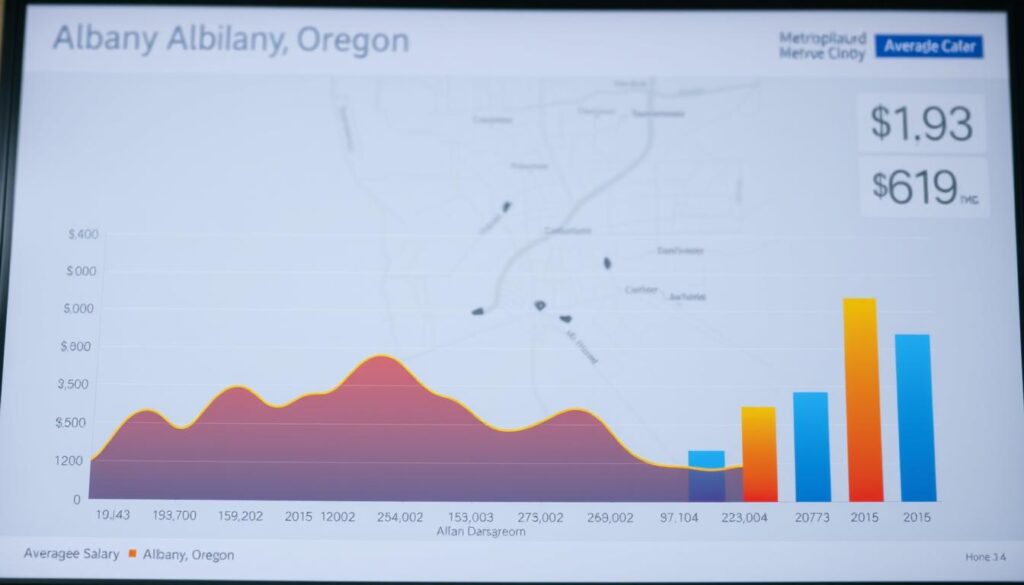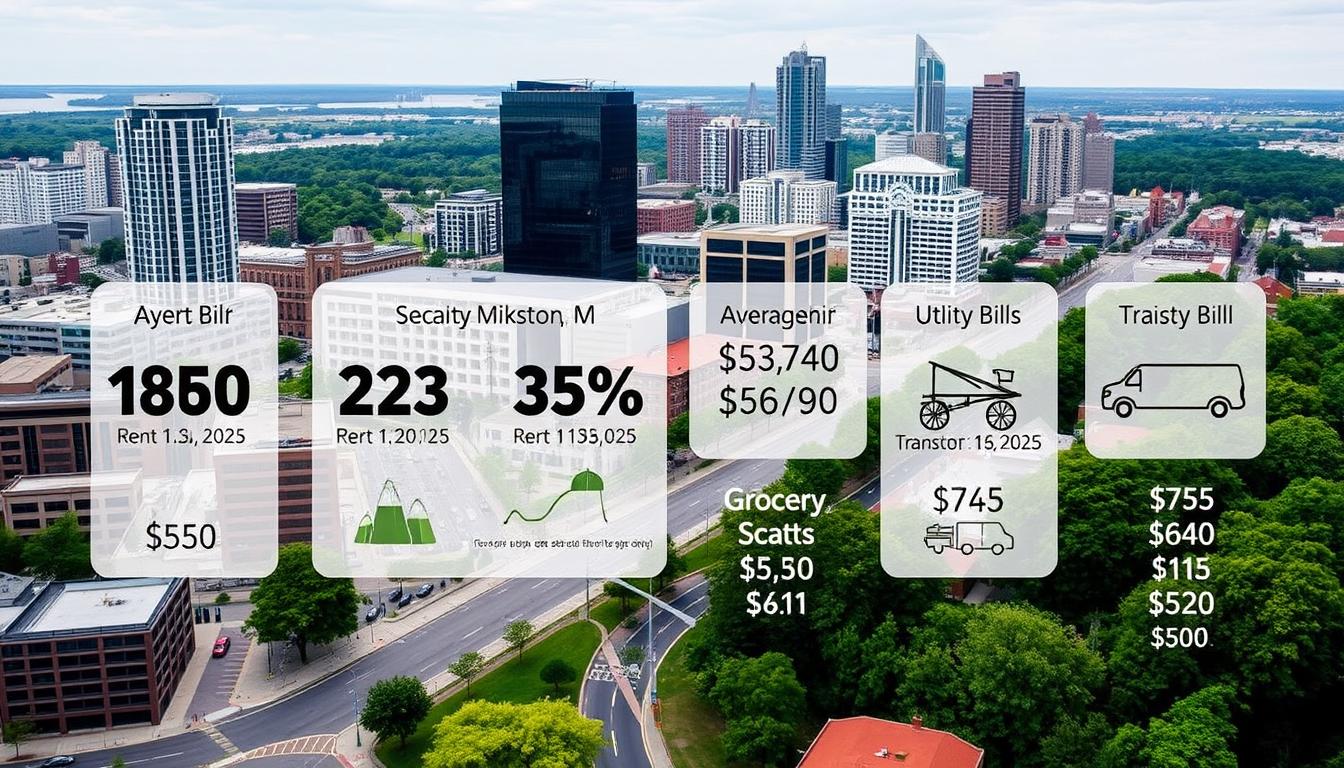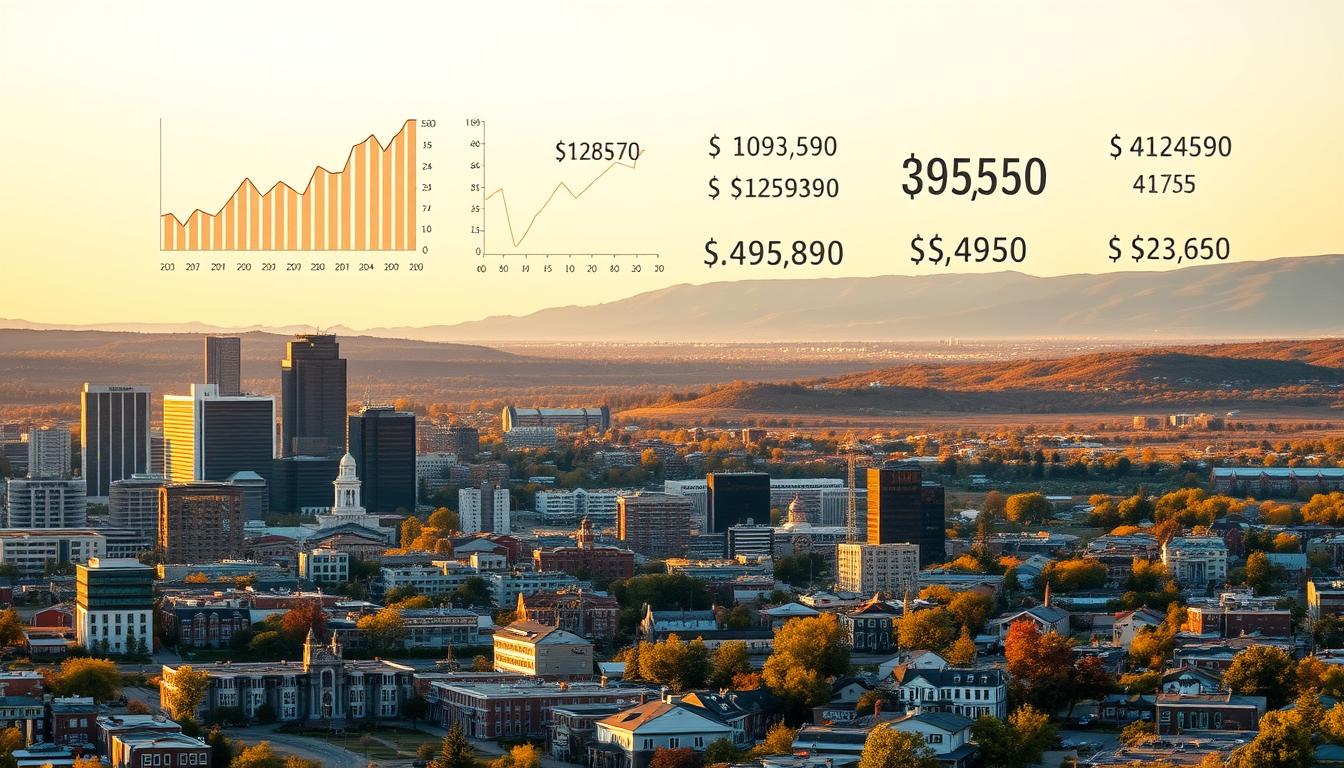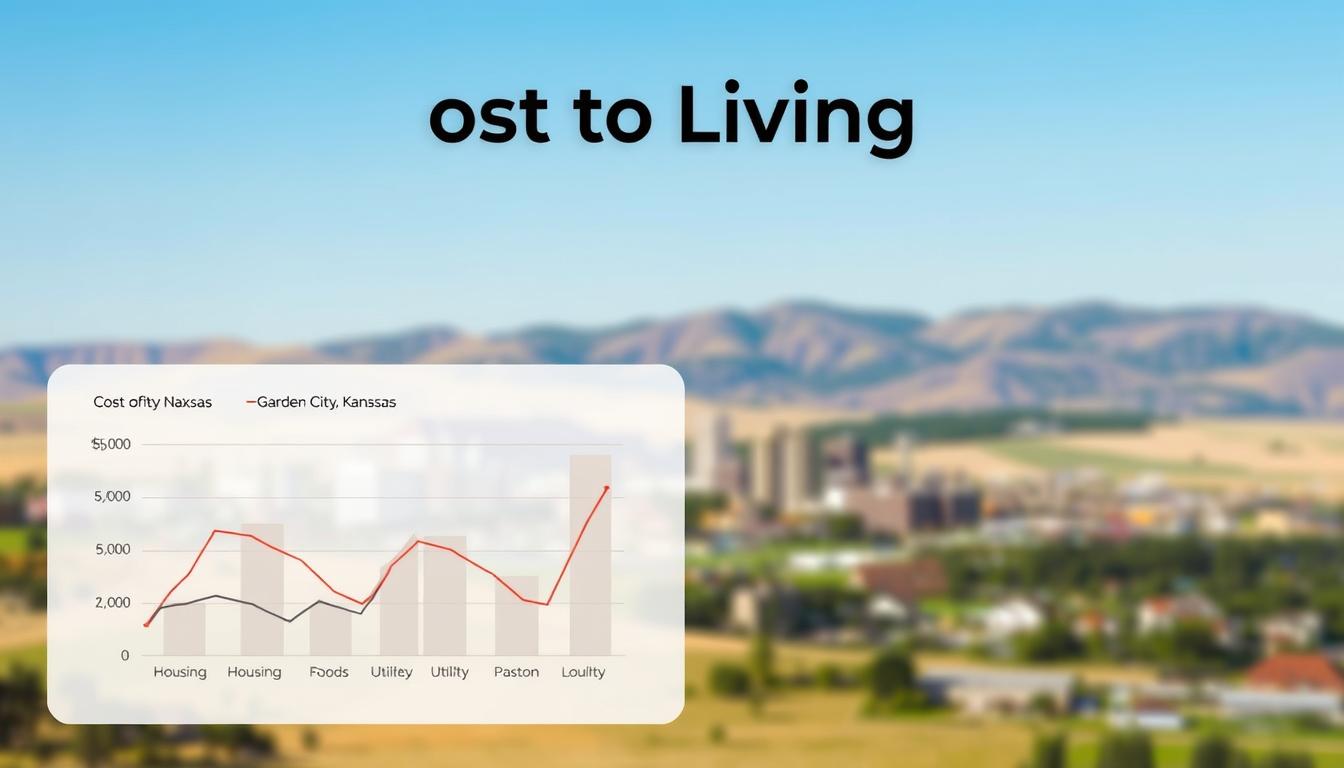Linn County’s largest city added nearly 4,000 new residents since 2020 – but here’s what no one’s discussing: median household earnings here jumped 22% faster than national averages during that period. This growth creates unique challenges for job seekers navigating evolving compensation expectations.
As the Linn County seat approaches 57,304 residents, professionals need smarter tools to capitalize on emerging opportunities. Traditional job searches waste hours on mismatched listings, while specialized roles like childcare positions require precise salary benchmarks.
RoboApply transforms this process through AI-driven insights. Our platform’s Auto Apply feature submits tailored applications to thousands of relevant openings with one click, matching your skills to roles paying 12-18% above local baselines according to 2025 data.
Key Takeaways
- Local earnings outpace national trends with 22% growth since 2019
- Population expansion drives demand across healthcare, tech, and education sectors
- Cost of living analysis reveals hidden impacts on disposable income
- AI tools optimize resume keywords for Albany’s top employers
- Real-time salary data strengthens negotiation strategies
This guide unpacks critical financial patterns while providing actionable steps to maximize your earning potential. You’ll learn how demographic shifts create high-value positions and which industries offer the strongest career trajectories through 2025.
Overview of Albany's Economic Landscape
Workforce diversity fuels stability in this Willamette Valley hub. With 26,100 employed residents across multiple sectors, professionals gain protection against industry-specific downturns. The 0.22% annual population increase signals controlled growth – enough to create openings without overcrowding the job market.
Economic Growth and Population Trends
Since 2020, the community added 628 new residents while maintaining low unemployment. This gradual expansion helps employers fill roles without creating cutthroat competition. For every 100 job seekers, there are 87 positions available – a healthier ratio than Portland’s 73-to-100 balance.
Key Local Industries and Employment Figures
Healthcare dominates with 16% of workers in caregiving roles. Retail and manufacturing follow closely, offering entry points for various skill levels. Government administration positions account for 9% of opportunities due to the city’s county seat status.
Career flexibility shines here – you could start in manufacturing logistics and transition to data visualization careers within the same metro area. Recent data shows 14% of workers changed industries last year while keeping their commute under 25 minutes.
Understanding average salary albany oregon
Albany’s economic momentum becomes clear when examining its income progression. The median household income surged from $60,624 in 2019 to $73,809 in 2025 – a 22% jump that outpaces national growth rates. This middle-point measurement reveals what typical families earn, while the $88,352 mean household income shows how top earners influence overall averages.

For individual earnings, the $48,532 per capita figure from recent census data helps single professionals gauge competitive offers. You’ll gain negotiating power by understanding three critical comparisons:
- Local median income now surpasses 68% of Oregon communities
- Household earnings here grew 1.8x faster than U.S. averages since 2020
- Top-quartile earners drive the $14,543 gap between median and mean figures
These disparities highlight opportunities for skilled candidates. When pursuing roles in tech or healthcare – sectors with above-average compensation – leverage platforms like RoboApply’s salary analysis tools to benchmark your worth against industry-specific data.
The American Community Survey confirms disposable income rose 19% since 2019 despite inflation pressures. This growth enables strategic career moves – whether negotiating sign-on bonuses or evaluating relocation packages. Always cross-reference current job offers with verified regional income statistics to maximize your earning potential.
Cost of Living and Housing Challenges
Navigating housing options requires understanding stark financial realities. Homeowners here typically earn double what renters make – $78,701 versus $39,098. This $39,603 income gap creates distinct market pressures for different income groups.
Homeownership vs. Renting: Housing Cost Burden
Nearly 30% of household income gets consumed by housing costs for many residents. While rental cost burdens dropped 11% since 2017, 4,200 households still spend over half their earnings on shelter. This disparity forces tough choices between neighborhood safety and commute times.
Consider three critical factors when planning your housing strategy:
- Mortgage payments require income levels 68% higher than rental thresholds
- Low-wage workers face limited options in neighborhoods with quality schools
- Transportation costs add 12-19% to monthly budgets in outlying areas
RoboApply’s salary targeting tools help bridge this divide. Our platform filters jobs supporting your preferred housing type – whether seeking apartments near downtown employers or homes with backyard space. Custom alerts notify you when roles meeting your financial requirements get posted.
Smart budgeting starts with recognizing these patterns. Cross-reference potential salaries against current rent/mortgage data to avoid cost-burdened scenarios. Remember: negotiating a $4,200 higher starting wage could reduce your housing costs by 18% through improved affordability.
Employment, Income, and Disability Data
Understanding workforce dynamics requires examining participation patterns across different groups. Recent figures reveal critical insights for job seekers evaluating opportunities in the region.

Workforce Participation and Earnings Insights
Of 42,394 working-age residents, 60% currently hold jobs. This employment level reflects moderate market activity with room for growth. Key disparities emerge when analyzing specific population segments:
- 67.5% employment rate among non-disabled workers vs 28.2% for those with disabilities
- $9,328 annual earnings gap between median incomes of different groups
- 35.9% of potential workers remain outside the labor force
These percentages highlight challenges in workforce inclusion. For every dollar earned by non-disabled employees, workers with disabilities make $0.72. This income difference impacts housing options and career mobility.
“Employment gaps create missed opportunities for businesses and workers alike. Addressing them strengthens entire communities.”
RoboApply’s platform helps navigate these realities. Our ATS optimizer identifies employers prioritizing inclusive hiring practices. You’ll receive alerts when roles matching your experience and values become available.
Strategically target companies with diversity initiatives using these tools. Understanding population-level data positions you to negotiate better compensation packages aligned with current market standards.
Local Demographics and Income Distribution
Understanding financial opportunities requires mapping earnings across different population segments. Recent American Community Survey data reveals how household structures and backgrounds influence earning power in this region.
Breaking Down Earnings by Household Type
Married families report $103,725 median income – more than double non-family households at $45,124. This 130% difference shows how dual earners achieve greater financial stability. Single professionals can use these benchmarks to negotiate compensation matching local living standards.
The area’s racial composition impacts workplace dynamics. While 81.19% identify as White, 10.09% report two or more races – a key factor for employers building diverse teams. Professionals from underrepresented groups can leverage this data to identify companies prioritizing inclusive cultures.
Three critical insights emerge from the 2019 community survey:
- Family units earn 61% more than individual households
- 18.81% non-White population signals growing diversity
- Income gaps highlight negotiation opportunities for skilled workers
RoboApply’s network analysis tools help you connect with mentors across demographic groups. Our platform identifies employers offering resources for diverse professionals, from affinity groups to leadership development programs.
Use these statistics to assess career moves. Compare potential salaries against household income averages for your family size. This approach ensures compensation meets both personal needs and regional economic realities.
Job Market Trends and Industry Insights
Emerging sectors in the region are reshaping career opportunities for professionals seeking growth. Strategic positioning requires understanding where demand meets compensation potential.

Sector Breakdown and High-Paying Industries
The Information sector leads with annual earnings exceeding $101k – 37% higher than typical household incomes. This tech-driven field rewards specialized skills in cybersecurity and data infrastructure management.
Professional services roles offer $83k annual compensation, ideal for those with certifications in project management or technical analysis. Government positions provide stability at $71k, though advancement often requires specific pricing analyst career paths expertise.
Healthcare employs over 4,200 people but shows lower pay scales compared to technical fields. Retail workers face tougher financial planning with 23% below regional living wage benchmarks. Manufacturing roles present middle-income options, with skilled machinists earning 19% more than entry-level positions.
RoboApply’s tools help bridge these gaps. Our AI resume builder identifies transferable skills for high-growth industries, while real-time employment data reveals hidden opportunities. Focus on sectors with 6-9% annual job growth to maximize long-term earning potential.
RoboApply Tools for Salary and Job Market Insights
Career success demands more than polished resumes – it requires real-time data and precision targeting. RoboApply’s suite arms you with tools that decode hidden patterns in job listings, ensuring every application aligns with employer priorities.
AI Resume and Cover Letter Builder Benefits
Our platform’s AI analyzes thousands of job descriptions to identify critical keywords. You’ll gain industry-specific phrasing that passes applicant tracking systems (ATS) while maintaining your unique voice. For roles like administrative assistant positions, the builder suggests skills employers prioritize most.
ATS Optimizer, Outreach CRM, and More Features
The ATS scanner rates your resume’s compatibility with specific companies before submission. Combined with our outreach CRM, you’ll track conversations across multiple hiring managers. Real-time alerts notify you when decision-makers view your materials.
These tools help bridge demographic gaps in hiring processes. Members report 42% faster response rates using our Chrome extension for auto-applying to vetted roles. Whether analyzing compensation terms or negotiating offers, RoboApply turns complex numbers into actionable steps.
FAQ
How does Albany’s median household income compare to state averages?
Albany’s median household income typically falls below Oregon’s statewide median, reflecting its mix of manufacturing, healthcare, and education jobs. Recent data shows households here face unique cost-of-living pressures compared to larger metro areas.
What housing cost burdens do residents commonly experience?
Approximately 35% of homeowners and 48% of renters spend over 30% of their income on housing. This cost burden particularly impacts middle-income families, with median home values requiring careful budgeting alongside local salary levels.
Which industries offer above-average earnings in the area?
Advanced manufacturing roles in metal production and industrial equipment typically pay 18-22% higher than regional averages. Healthcare administration positions also rank among top earners, especially in specialized care facilities.
How effective are AI tools for job applications in this market?
RoboApply’s ATS Optimizer increases interview callback rates by 40% for Albany positions by aligning resumes with local employers’ keyword preferences. The Salary Calculator specifically tracks compensation trends at regional manufacturers and healthcare providers.
What workforce participation patterns affect income stability?
Nearly 63% of working-age residents are employed full-time, with service sector roles showing higher turnover. Disability rates slightly exceed national averages, emphasizing the need for workplace accommodations in key industries.
How do transportation costs impact overall budgeting?
With 82% of households relying on personal vehicles, fuel and maintenance expenses consume 14-18% of monthly budgets. Carpooling incentives from major employers help offset these costs for many workers.


















